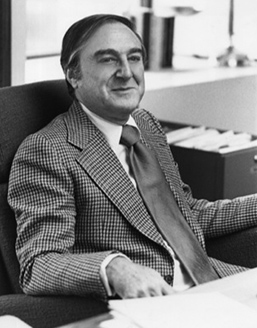
Ask any former employee, associate, or client about Mel Rubin and you’re probably in for a slew of stories about an incredibly talented, bigger than life, individual who was years ahead of his time in everything he did.
Rubin’s writing career began in WWII as a communications officer aboard the USS Lexington (CV-16) publishing the shipboard newspaper. After the war, he was sent to the Navy Public Information Department in Washington, DC where he wrote speeches for Admirals and Marine Corps Generals and conceived the idea of a tour of Navy Combat Art.
After leaving the Navy, Rubin was hired as a copywriter in a large, direct marketing firm, D.H. Ahrend Company. He wrote circulation and promotion letters for Look and other magazines, and copy for a host of other clients. He learned the rigors of mail order copy, the importance of testing, and that – however clever or creative the copy – if the returns didn’t measure up, it was a bust.
Rubin reconnected with a friend at Ahrend and in March 1950 they left and started the Shaller Rubin Company. They began with direct mail, sales promotion, and print advertising. Among their early assignments was a monthly brochure for the Schering sales force featuring every product in the line – Chlor-Trimeton, Coricidin, etc. Other assignments soon followed: detail aids for Geigy, Ciba, and Pfizer, and then advertising for clients such as Reed & Carnrick, Thayer Labs’ Division of Revlon, Norwich Eaton Pharmaceuticals for Chloraseptic (ethical OTC and TV introduction of brand), and Marion Merrell Dow for Cepacol, Cepastat, Citrucel and Nicorette.
Rubin’s agency was a hybrid of consumer and pharmaceutical accounts, with both pharma and consumer specialists participating in the creative process. It quickly became known as the “hot shop,” especially for creative talent from medical agencies including Tom Domanico, Frank Hughes, Harry Sweeney, and others.
The agency’s TV experience with such clients as L’Oreal Preference, Chloraseptic’s expansion from ethical OTC to full OTC status, and the Garanimals TV campaign that made the brand the fastest growing line of infant, toddler and pre-school clothing in the U.S., inevitably turned the agency’s head to thinking of how to use television for prescription drugs.
In the mid 1960s, Rubin presented a TV commercial to Schering Corp. intended to boost sales of Chlor-Trimeton antihistamine. The concept was to stress the difficulty of identifying the source of allergic symptoms, and encourage sufferers to visit a doctor. The product name would not be mentioned as it was considered a taboo by the pharmaceutical industry Schering management found the idea “charming”, “inventive”, “amusing”, “creative” and “utterly impossible.”
Rubin’s continuous advocacy put him on the program of a meeting of the Pharmaceutical Manufacturer’s Association, a special session on “How to Use TV for Marketing of Rx Products.” He created a commercial to increase the compliance rate of hypertension sufferers and explained that it was intended only to show how television could be used to increase patient compliance – no product would be named. The discussion that followed was intended as a debate on whether TV was an acceptable road for Rx products. Every attendee either criticized or loved the TV spot, but while it was all they talked about, nothing happened.
When the first TV ad for an RX product finally launched – Marion Merrill Dow’s anti-smoking chewing gum, Nicorette – it was vindication that Rubin’s agency (now Rubin, Reid, Noto and Ehrenthal) was the launching agency. He had seen the potential of DTC and TV advertising for Rx products and led the way in bringing it to fruition.
While Mel Rubin’s contributions to our industry are numerous and significant, perhaps his greatest legacy is his character. Mel’s charisma and spirit coupled with his keen intellect have been an inspiration to all who have had the pleasure of associating with him.